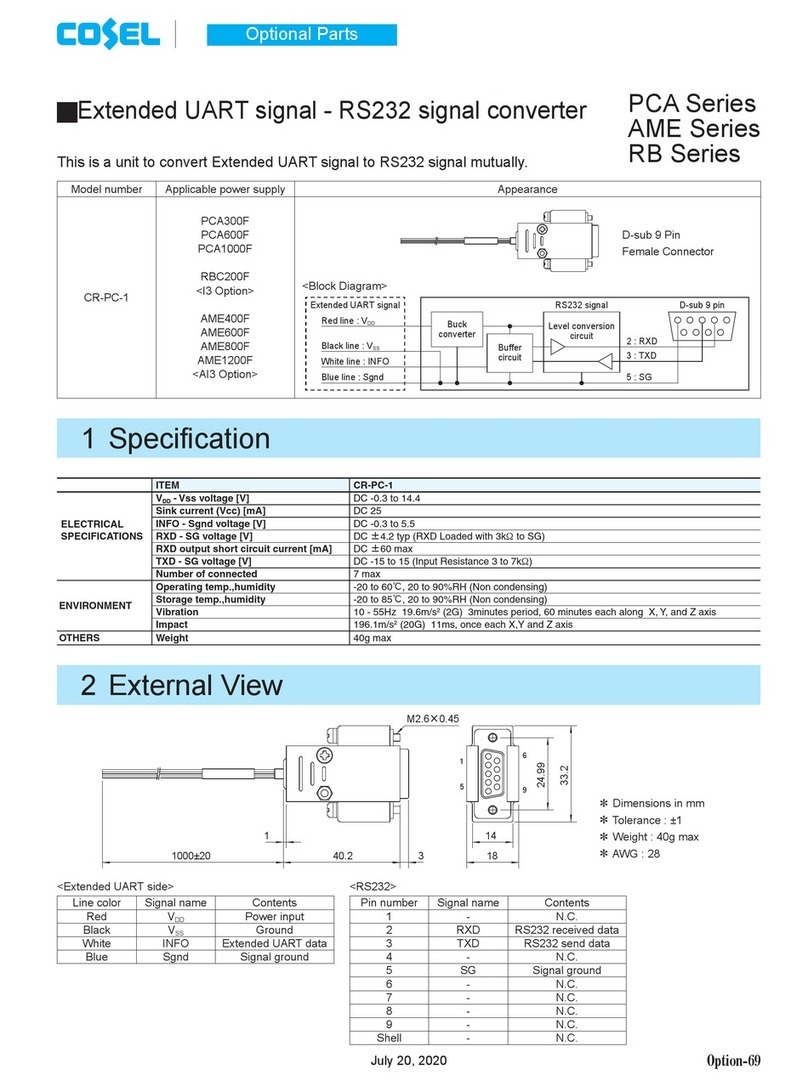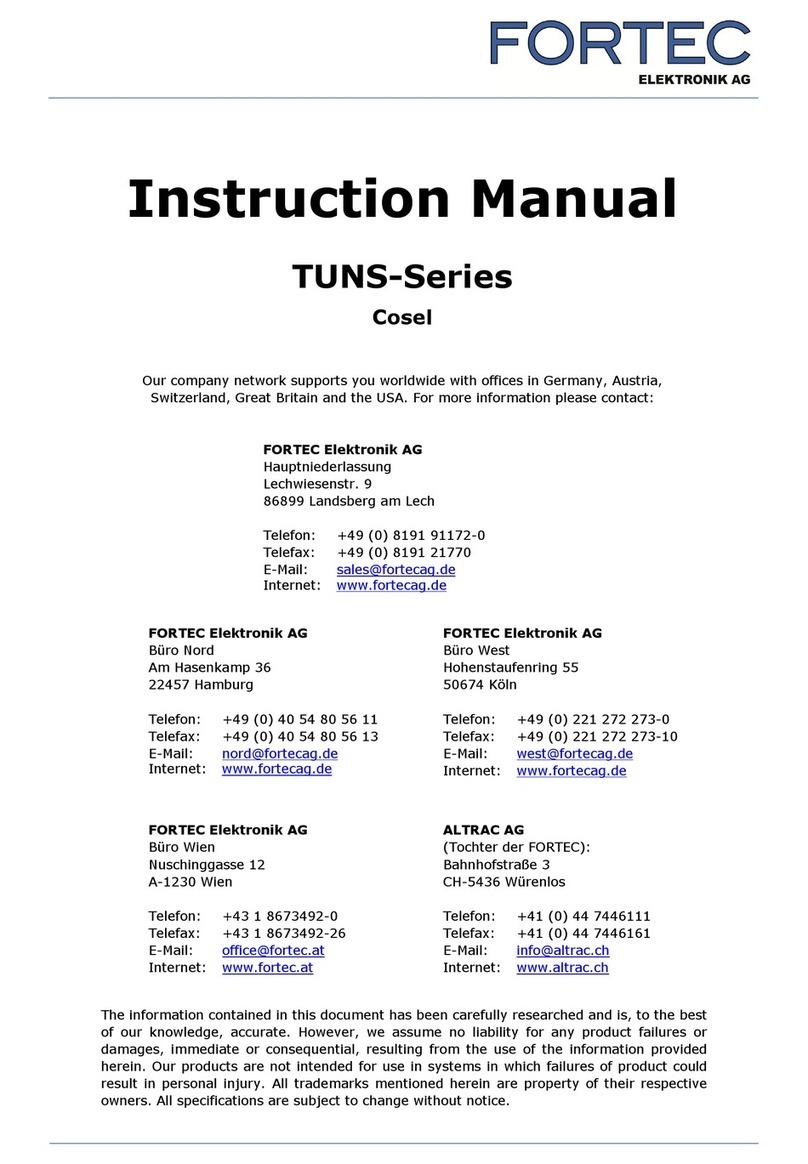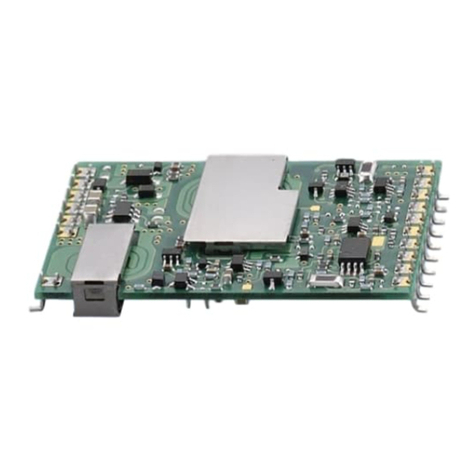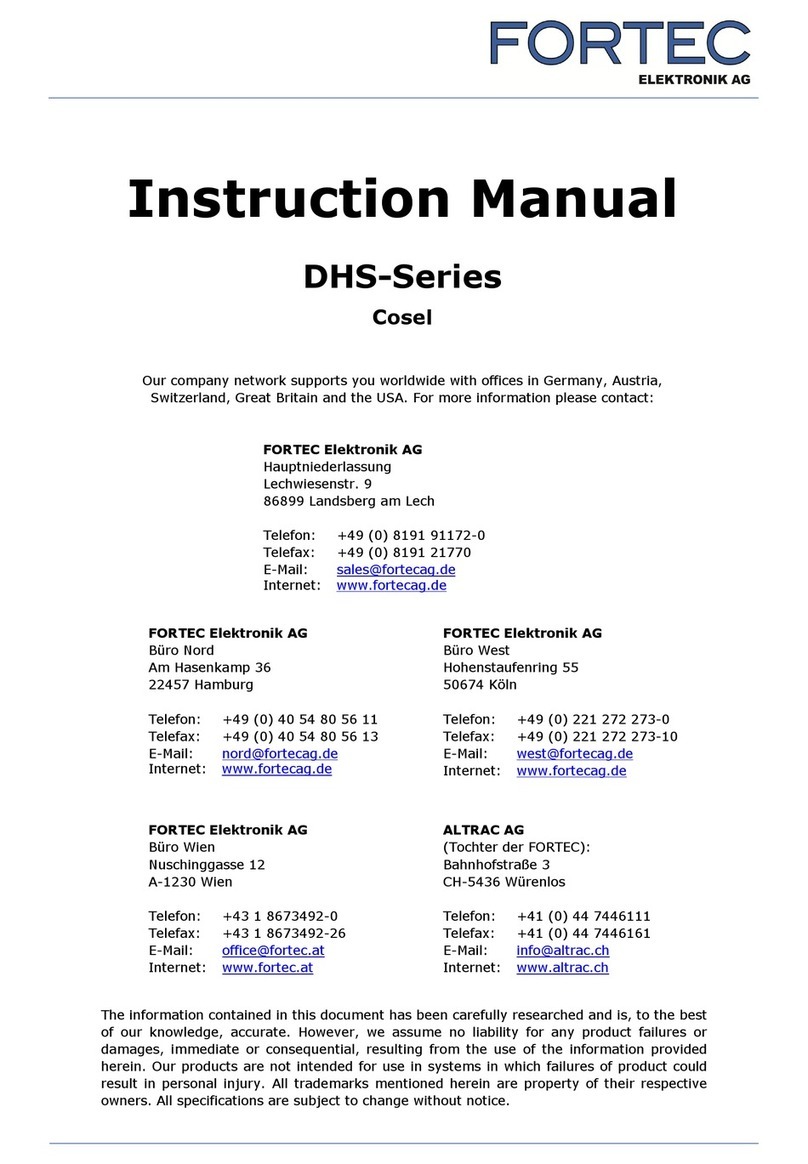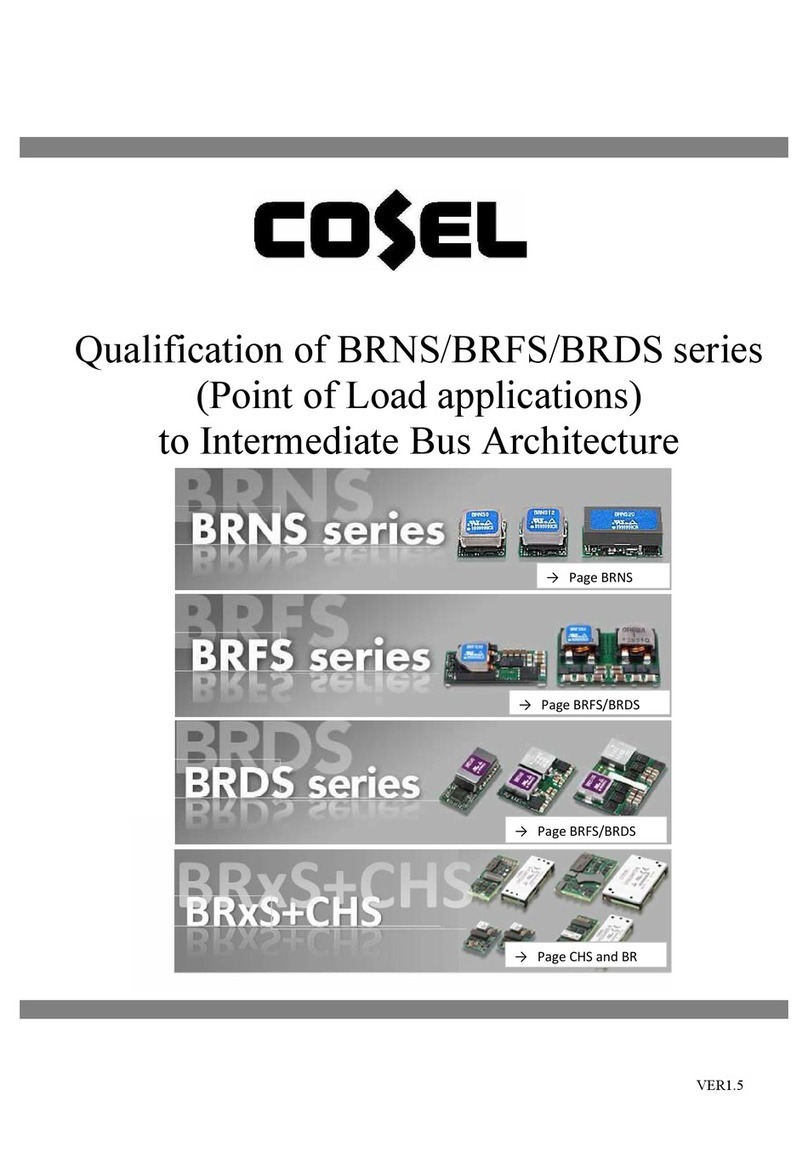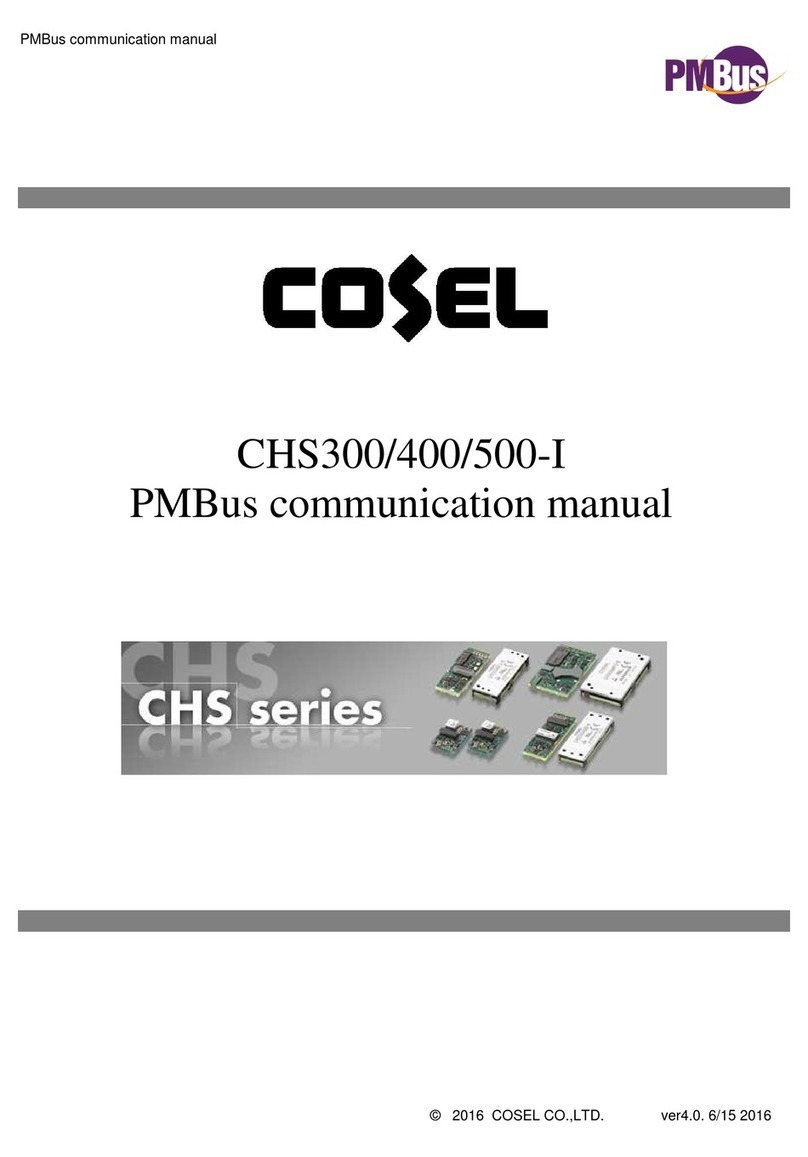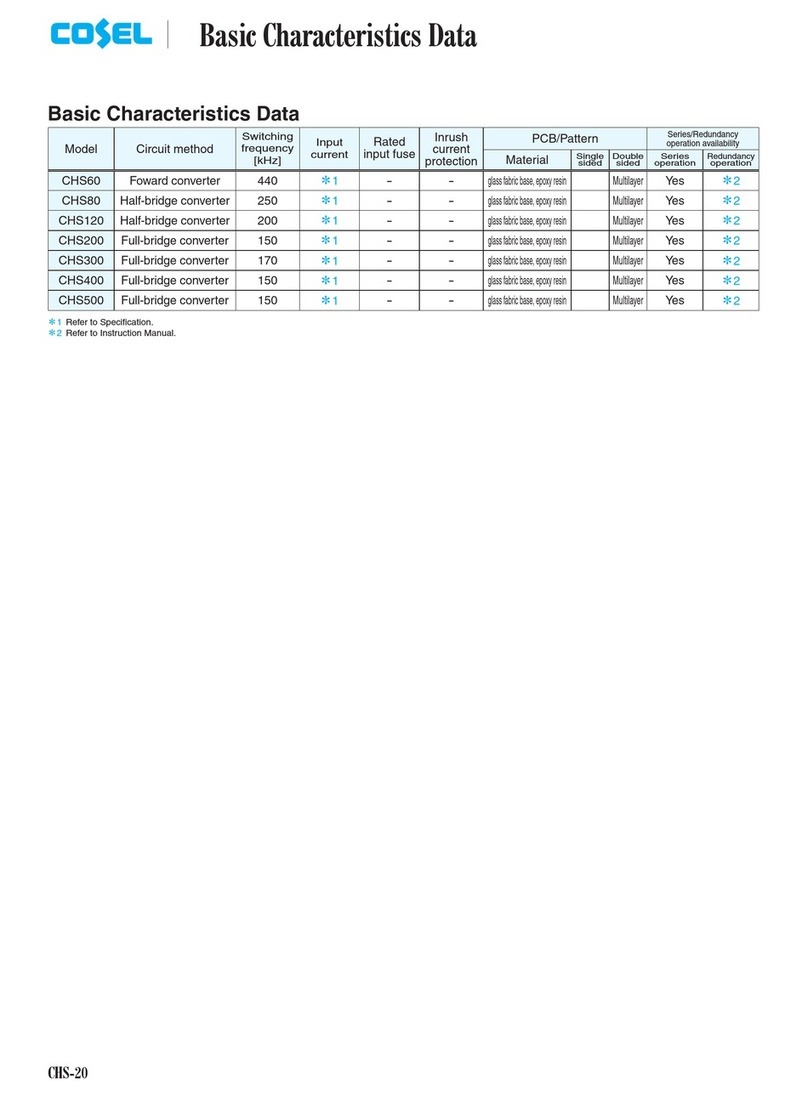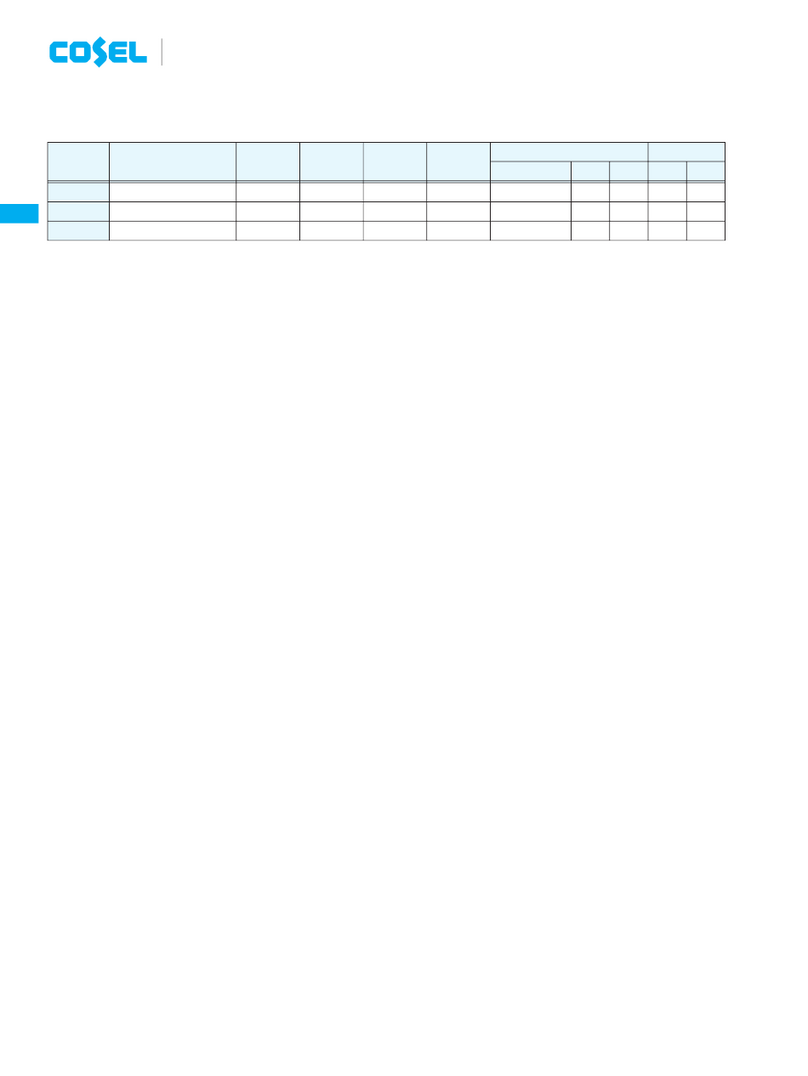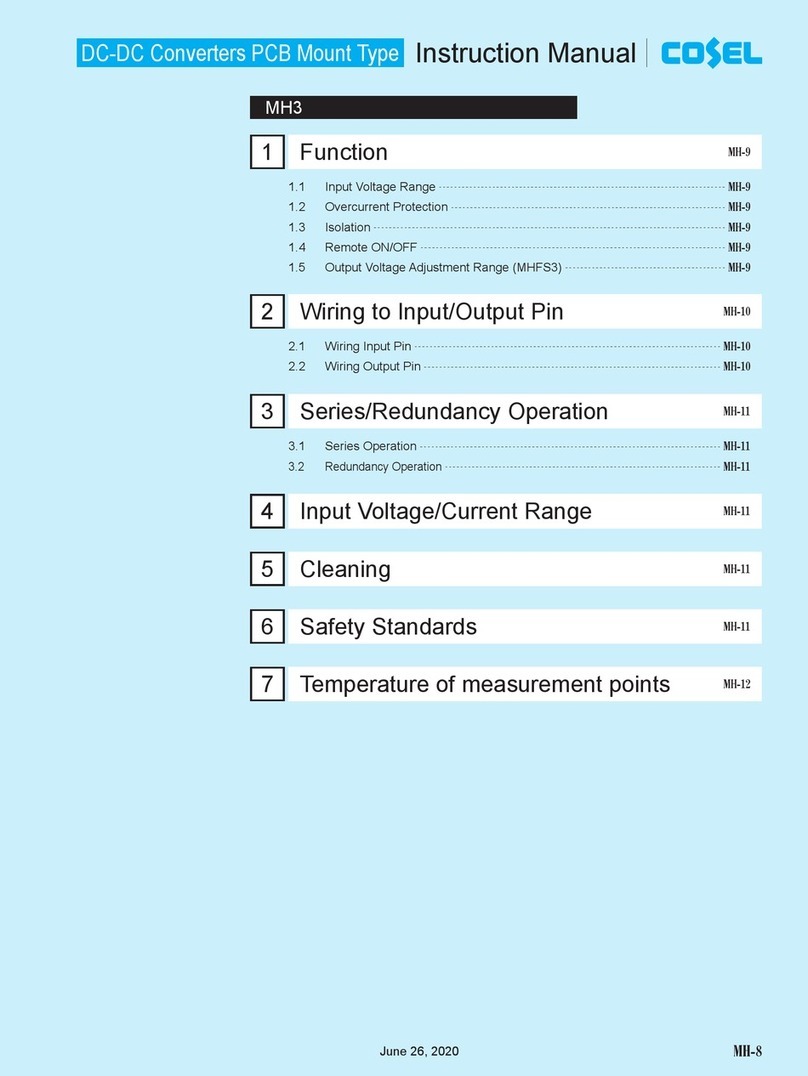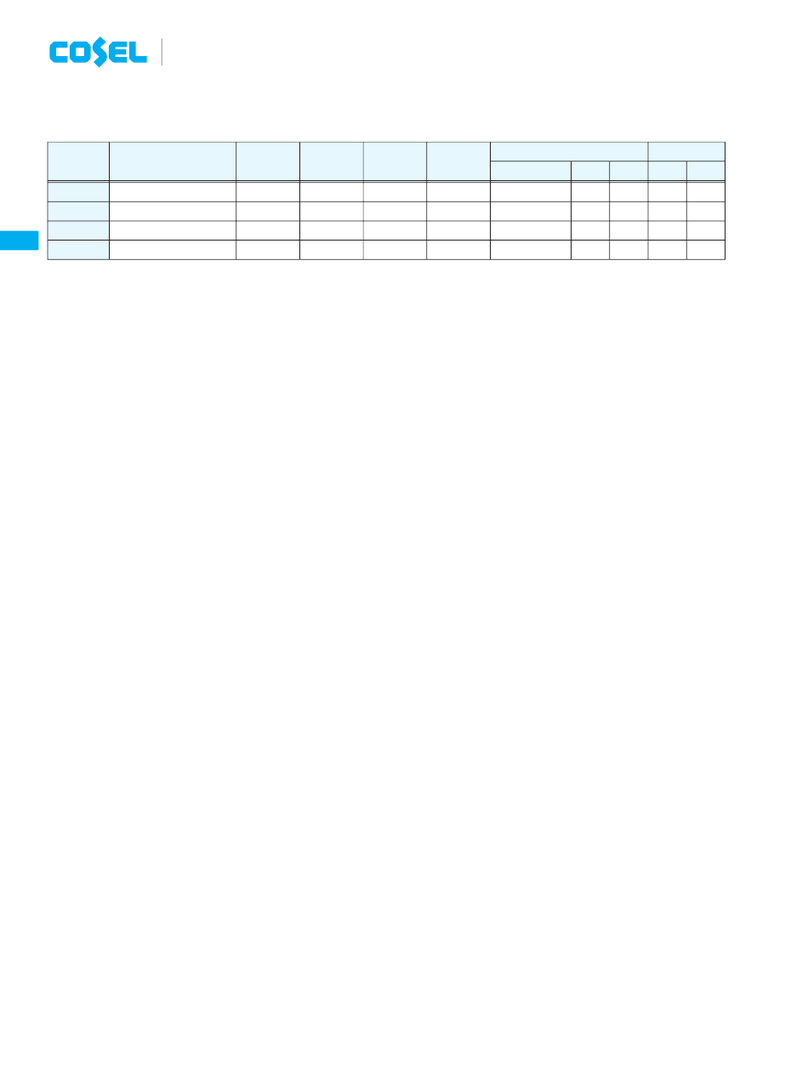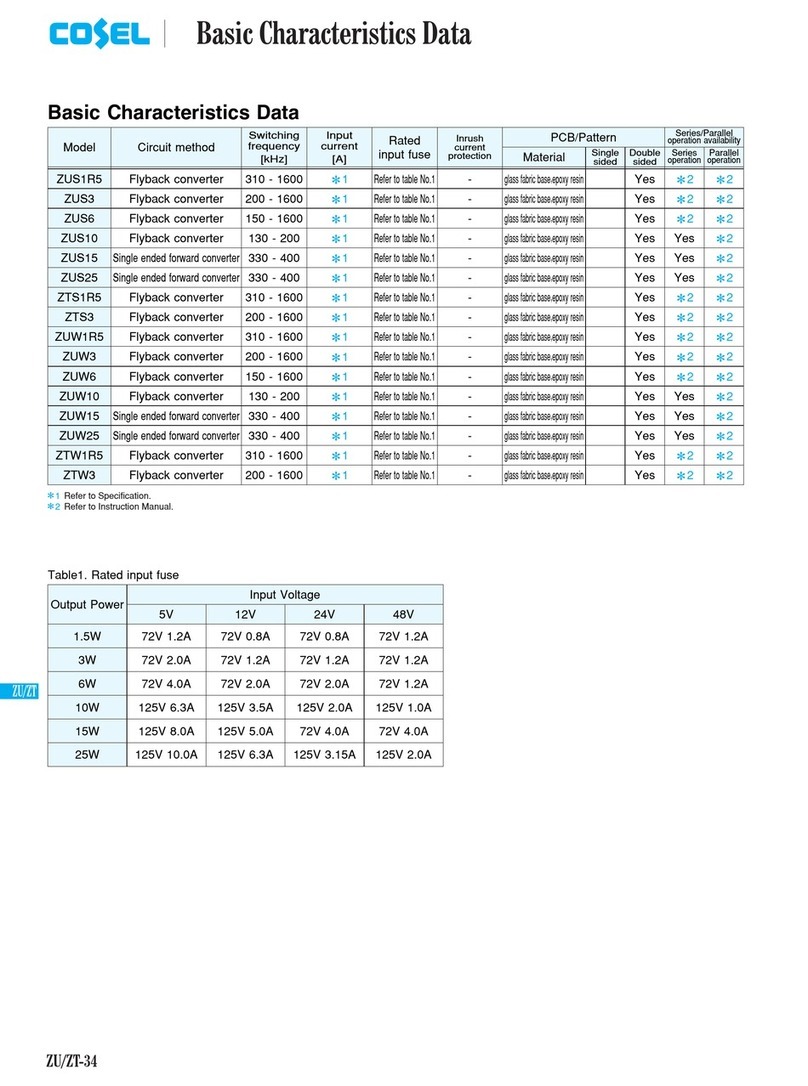¡When remote sensing is not used, make sure +VOUT and +S are
shorted, and that -VOUT and -S are shorted as well.
¡Keep the patterns between +S and +VOUT and between -S and
-VOUT as short as possible. Avoid a looping pattern. If noise en-
ters the loop, the operation of the power module will become un-
stable.
(2) When Remote Sensing is Used
¡Using remote sensing with long wires may cause output voltage to
become unstable. Consult us if long sensing wiring is necessary.
¡Sensing patterns or wires should be as short as possible. If wires
are used, use either twisted-pair or shielded wires.
¡Use wide PCB patterns or thick wires between the power module
and the load. Line drop should be kept less than 0.3V. Make sure
output voltage from the power module stays within the specified
range.
¡If the sensing patterns are shorted by mistake, a large current may
flow and damage the pattern. This can be prevented by installing
fuses or resistors close to the load.
As wiring or load impedance may generate oscillation or large
fluctuations in output voltage, make sure enough evaluation is
given in advance.
4.6 Adjustable voltage range
¡Output voltage can be adjusted by connecting an external potenti-
ometer (VR1) and resistors (R1 and R2) as shown in Fig. 4.5.
Output voltage will increase if the resistance between 1and 2is
reduced by turning the potentiometer clockwise.
Recommended values for external components are shown in
Table 4.2.
Consult us if the power module is used in a different configuration.
¡Output voltage between +VOUT and -VOUT can be adjusted by
connecting external resistors to TRM.
However, when the input voltage is 18 - 20VDC with CBS50/100/
20024 or 36 - 40VDC with CBS50/100/20048, the output voltage
adjustment range is 60 - 105% of the rated output voltage except
for 1.8/2.5/48V output models.
When input voltage is 20 - 22VDC with CBS35024 models or 36
- 40VDC with CBS35048 models, the output voltage adjustment
range becomes as shown in Fig. 4.4-1.
¡The wiring to the potentiometer should be as short as possible.
As the ambient temperature fluctuation characteristics deteriorates
depending on the types of resistors and potentiometers used,
please use resistors and potentiometers of the following specifica-
tions:
Resistors.............
Metal film type, coefficient less than ±100ppm/C
Potentiometers ... Cermet type, coefficient less than
±
300ppm/C
¡When output voltage adjustment is not required, open TRM.
¡Note that, when adjusting output voltage, setting output voltage
too high may cause OVP to work.
Control Amp. of
rated voltage
VOUT
1.8V
2.5V
3.3 - 48V
RB
1.3kW
1.8kW
3kW
-
+
+S
+VOUT
TRM
-S
-VOUT
2.5V
RA
3kW
RB RC
1kW
R2
R1
1
VR1
5kW
3
2
The output adjustment range for CBS450 is shown in Fig. 4.4-2.
DC-DC Converters Bus Converter.Power Module Type
Instruction Manual
CBS-17
CBS
Fig. 4.5 Connecting External Parts
+S
Co
-S
+VOUT
-VOUT
+
Wire as close as possible
Load
Fig. 4.3 When Remote Sensing is Used
Fig. 4.4-1 CBS350 Output Voltage Adjustment Range
Fig. 4.4-2 CBS450 Output Voltage Adjustment Range
OUTPUT VOLTAGE [V]
OUTPUT VOLTAGE [V]
INPUT VOLTAGE [V]
CBS4504828
26.0
25.0
24.0
19.2
0380 0040 57 60
32.2
30.8
28.0
16.8
3640 60 76
INPUT VOLTAGE [V]
CBS4504824
ADJUSTMENT RANGE [%]
ADJUSTMENT RANGE [%]
INPUT VOLTAGE [V]
CBS35048OO
INPUT VOLTAGE [V]
CBS35024OO
20
100
105
110
21 22 230
00
80
60
32,48
12,24,28
36
100
105
110
115
38 40 420
80
60
32,48
48
12,24,28
35.2
32.0
25.6
036040 76
OUTPUT VOLTAGE [V]
INPUT VOLTAGE [V]
CBS4504832
mecbs1.inddCBS-17mecbs1inddCBS-172015/06/1910:58:522015/06/1910:58:52

